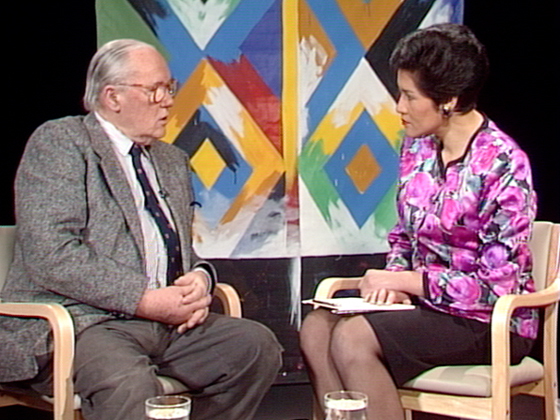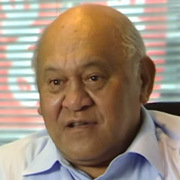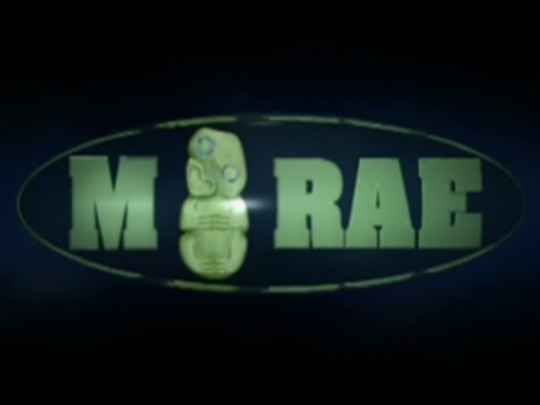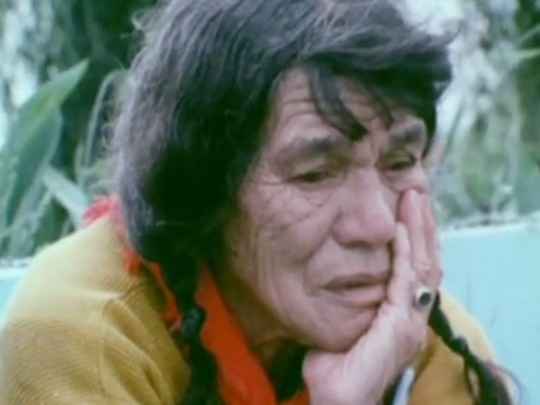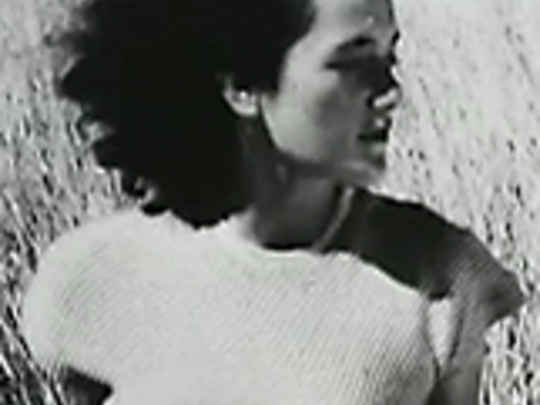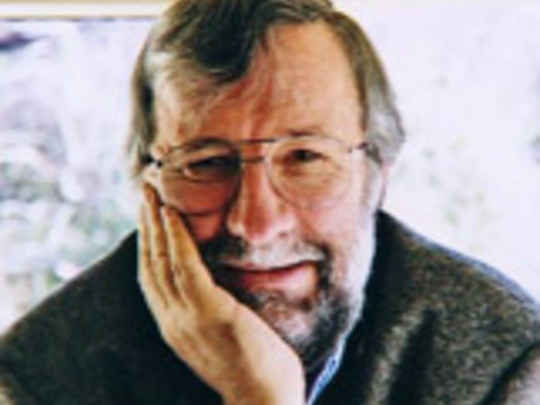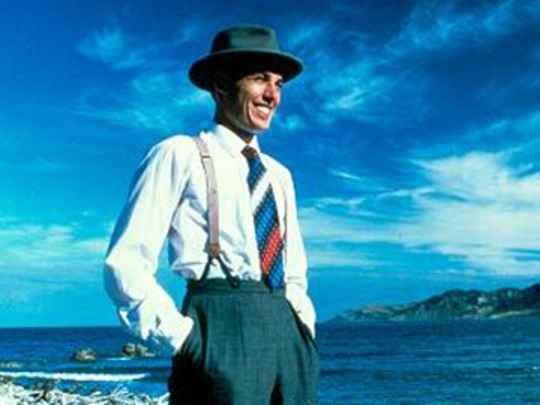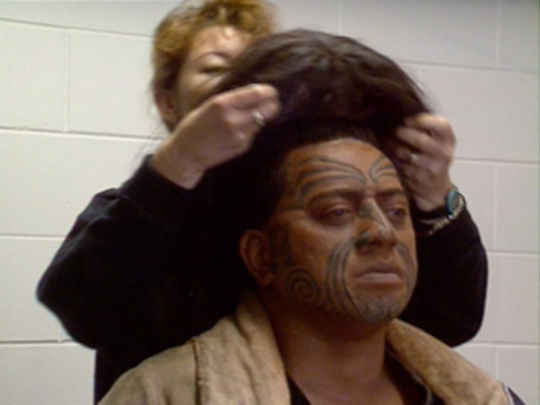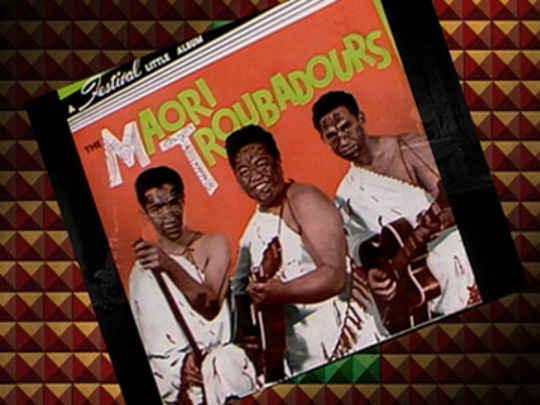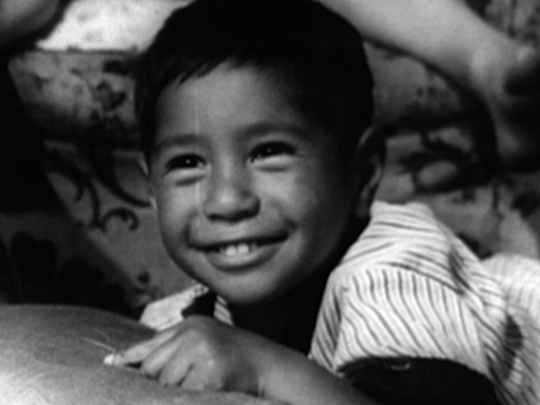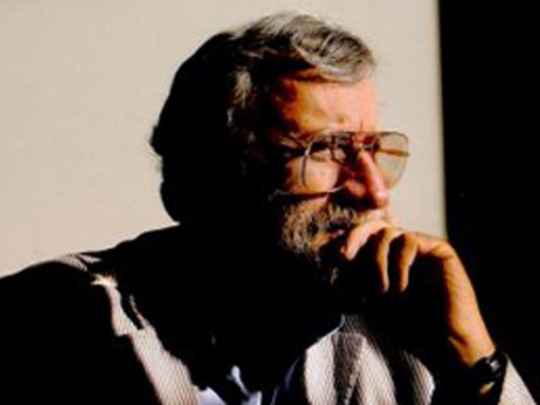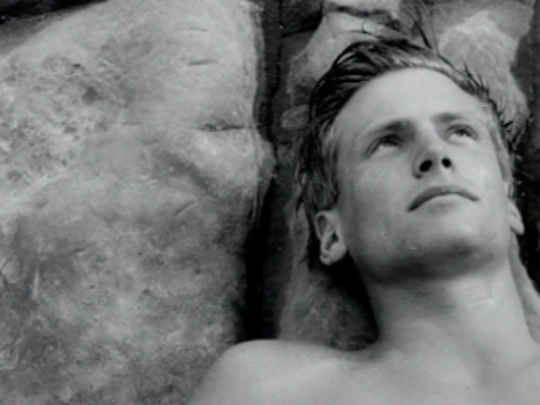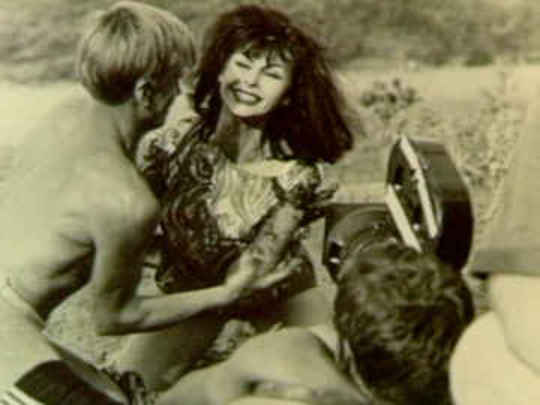Marae - John O'Shea on Tangata Whenua
Television (Excerpts) – 1993
A Producer's Perspective
Marae is the longest running Māori current affairs programme, aiming both at a Māori audience and a wider audience among TVNZ's viewers. It positions itself as setting "a standard for cutting edge current affairs for Māori, by Māori".
Since first broadcasting live in 1992, Marae has become what Colin Peacock from Radio New Zealand's Mediawatch called "a professional current affairs programme, taken seriously by Māori leaders and Pākehā politicians alike. A show which clearly has something to offer non-Māori viewers too."
Formatted as an hour long magazine programme on Māori topics, Marae is broadcast mainly in English. Initially it had a high percentage of te reo Māori as a requirement, but for some years now, the show has run with a lower percentage of reo than previously required by Te Māngai Pāho, its funders.
The programme's statement of intent leans heavily towards keeping its audience in touch with the issues, political or otherwise, that affect the lives of Māori, or explaining kaupapa Māori from a Māori perspective. Of course, non Māori talent make a large contribution to the mix of the programme.
The Marae Digipoll which is taken among a very large database of Māori has been quoted regularly on TV One's 6pm news and in newspapers, especially Auckland-based print media. It has become a respected barometer of matters Māori.
Before 1986 Maori programmes at TVNZ were made under the direction of the 'Special Projects' department. Māori Programmes became a fully fledged department of its own in 1987. It took over two years to achieve independence. The first programmes were Waka Huia, Koha and Tagata Pasifika. Koha was moved all over the evening schedule from prime time to 11pm, until, inevitably it fell off the radar screen.
Marae more or less morphed out of Koha, with some of the key staff transferring from one show to the other. 'Marae' is understood by most New Zealanders as that piece of ground in front of a meeting house, where the orators address the gathering on issues of the day. It was not hard therefore to claim the term as a name for a magazine programme aimed at a broader audience.
The broadcasting world was going through a period of fundamental change. On the one hand it was finding itself ever more a 'slave of market forces' and on the other, needing to provide a 'public service'. The implications of accelerating technology changes were also having ramifications on the way it needed to operate.
At the time it all [Marae] started, we had to consolidate our diminishing resources into a slot which would become permanent; allow editorial control; and be a launching pad for further programmes. Based around Marae, the core programming of the Māori Programmes Department began to establish its identity in its Sunday slot. On occasion there have been breakouts into other areas of the TV schedule. Some have been primetime, some have been off-peak.
Our teams also worked on other shows while still meeting their Marae or Waka Huia responsibilities; eg in 1990, for the 150th anniversary of the signing of the Treaty of Waitangi, our people worked on shows such as Sunrise over Hikurangi Mountain, The Tall Ships of Gisborne and the concert at Bastion Point.
Breakout successes include The New Zealand Wars documentary series. I worked for eight months with producer Colin McRae to secure funding, and Tainui Stephens, who was a member of the Māori Programmes Department at the time the series was produced, moved over to direct the show.
It rated a high '28' on its first night and really gave the broadcaster — who couldn't imagine that a historical doco series could achieve the audience it did — a fright. Stand-outs amongst other programmes that screened in the evening hours included a documentary on the Otara Markets, and the 50th anniversary of Second Lieutenant Moana Ngārimu.
Sunday mornings, when the majority of programmes screened, are in many ways, a transmission paradox. It is not a good time to watch TV. Sunday morning viewers do not comprise significant ratings. The importance of ratings is important to TVNZ and more especially to the advertising agencies who control the spending of companies on their products. Our programmes are usually outside the advertising area so it's not a key zone for agencies or to the channel, which is engaged in a cut-throat battle with its rivals for bums on seats or for that all pervasive demographic, the young viewer.
In terms of Māori excursions into primetime, I think this youth-focus is wrong-headed. The Māori language resides with older people, who also have control of the money in the household. Māori language programming, if chosen wisely, will — my opinion — the attention of a wider audience.
The salient point is that, if the landscape is a Māori one, people will watch. If a programme is a festival of talking heads using reo only it will fail. But if you put the end of the 1975 Land March at Parliament on screen, people will watch. As with the foreshore and seabed hikoi in 2004, the people who participated, especially those in Māori dress, transformed the landscape of the streets of Wellington's CBD from a white collar one to a vision that became Māori for the time they were there.
On the other hand, Māori television has been able to maintain a regular presence in a slot where our viewers always know they can find us. We have been able to build up our ratings considerably even though we are in what our people have always called an antisocial timeslot or a 'ghetto'. We weren't offered anything else so we took it!
What are the benefits of Sunday mornings? Being commercial free, means an hour long programme can actually be an hour long: not merely the 'commercial hour' duration of 46 minutes. This is a production bonus. It is apparent too, that we are able to enjoy editorial freedom.
The non-commercial schedule is not as 'scrutinised' as other slots. We have been free to experiment with programming that we have put into that slot — within of course, the budgetary limitations. We are ever mindful of legal requirements.
It has been necessary to schedule a variety of programmes into the mix. The Māori audience is as sophisticated as the Pākehā one. There is an equivalent desire for a diverse range of programming. In this respect however, the voice of youth is only very occasionally heard, but it's fair to say that Māori youth have programming made especially for them.
As a result Marae has, for 25+ years, tried to creatively approach the unenviable brief of having to be all things to all viewers. The programme has, over that period, produced and broadcast a very diverse range of programmes. Staff of Marae (and Waka Huia) have taken on other shows, eg the Māori Sports Awards and kapa haka competition (roles since taken over by Māori Television). By doing this, it has generated good production experience, which sees many of the team being 'headhunted' by independent Māori producers.
The commercial reality of television is such that Māori programmes of this type, especially a series of 38 or more hour-long episodes a year, would never be seen in primetime on national commercial channels. Thankfully, Marae can be accessed more and more through new technology: on digital television and, through the internet, on TVNZ and the episodes which can be viewed here on NZ On Screen.
- The late Whai Ngata, ONZM, spent 25 years working in Māori broadcasting for TVNZ, including almost 15 as General Manager of Māori Programming. He passed away in April 2016.
